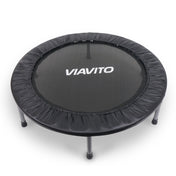Many people look at yoga as a relaxing activity, performed on brightly covered mats, however there is a lot more that goes into it than that. While the basic poses can be done by most and provide a little relief, the more advanced positions can be extremely challenging.
This can lead to practitioners looking for products to assist them, either by allowing them to push themselves harder or simply provide support so injuries don’t derail their progress. One such product is an item known as a yoga block.
Here you’ll discover what a yoga block is, how it works, the different types available, and who each is most suitable for. This should hopefully give you all you need to find a product to take your yoga poses to the next level and make the most of all the benefits that go with them.
Types of yoga blocks
Bamboo
Bamboo yoga blocks are sturdy, provide a firm base and are designed to last for a long time. They are the most expensive option and are best suited for experienced users, looking for a high-quality product.
Foam
Foam yoga blocks are considerably softer than bamboo. They offer an increased level of comfort but substantially less support and durability. Considering they are also the cheapest option they are a great choice for someone purchasing a yoga block for the first time.
Cork
Cork yoga blocks provide a nice level of balance between bamboo and foam. They offer reasonable levels of comfort, stability, and support, as well as being reasonably priced. These are the best type of yoga blocks for your average, casual user.
Other things to consider
Size
The size of a yoga block will determine both how and who can effectively use it. Consider both your size and ability level to ensure you find a yoga block that is the correct size for you.
Shape
Yoga blocks are available in a number of different shapes, which can affect how aggressively you can stretch with them, as well as how many ways you can hold them. While the standard rectangular shape will be fine for newer users, those who are slightly more experienced may want to look into another shape that will help you challenge themself.
Durability
The durability of a yoga block will be affected by both the material and the quality of the yoga block. If you plan to use your block frequently, for extended periods, or to help with poses where it will be under great stress, make sure to select a more durable option, to ensure it lasts an acceptable amount of time.
Weight
Yoga blocks aren’t overly heavy, but the weight will vary based on the size and material. If you plan to transport your yoga block on a regular basis or if you require more than one, make sure you select one that is light enough to not make it an issue to move.
What are the benefits of yoga blocks?
Prevent injury
Performing your poses on a yoga block, it will help you to limit injury by encouraging your body to stretch and bend in a natural way, helping to avoid overextending any muscles or joints.
Alignment
Yoga blocks can be used to adjust and realign your joints, particularly in the spine. Performing your poses with one will encourage your body to move into a natural position, overwriting any poor posture you may have developed.
Add length
Using a yoga block will help to ease pain and stress during poses, allowing you to go slightly deeper into them. Over time, this will help you to add length to the poses and increase your overall level of flexibility.
Support
Anyone suffering from any weakness, soreness or injury may struggle to complete poses correctly. By using a yoga block to provide support, it can alleviate stress from these areas, allowing you to complete the pose with the correct form.
Muscle building
Allowing you to go deeper into a stretch will not only increase your level of flexibility but will also help to build and strengthen your muscles as well, by using the same process of progressive overload found in weightlifting.
Yoga block maintenance
The only maintenance that can be performed on a yoga block is cleaning. This will stop them from smelling, looking dirty and generally becoming unhygienic. While foam yoga blocks can usually be placed in a washing machine, it is advisable to wash all yoga blocks by hand, with just a small amount of soap, in order to extend the life of the product.

